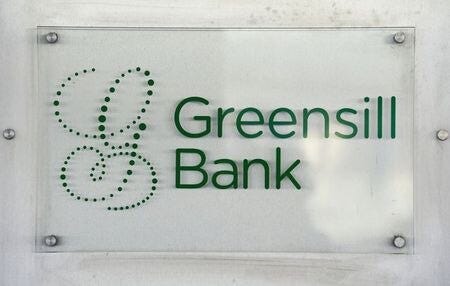Houston - We Have a Problem
And if these seem like conflicts of interest, they are just the tip of the iceberg.

Capital Thinking · Issue #798 · View online
Last summer, Steve Clapham and I collaborated on a piece about Greensill Capital. At the time, Greensill was valued at $3.5 billion, flying high alongside the likes of Revolut and Klarna among the most valuable financial technology companies in Europe.
In truth, it wasn’t really a fintech, but the company wasn’t shy to promote itself as one and, armed with Softbank investment and a sky-high multiple on sales, it looked like it may have been getting away with it.
Greensill Revisited
Marc Rubenstein | Net Interest:
Nevertheless, a look under the surface revealed that all was not right. Founded in 2011 by Lex Greensill, the company was a pioneer in a new field of supply chain finance.
Steve is an expert in forensic accounting and I’ve seen a fair few financial companies in my time and we agreed – this was a wrong ‘un.
We concluded:
The result is an institution drawn to scandal which itself raises several red flags. No-one comes out of this looking good – not the pioneer, nor its main investor, nor the companies it services.
The incoming correspondence each of us received after publishing was very high. Clearly, Greensill was raising eyebrows far and wide. This week, Greensill collapsed.
On Monday, an important insurance contract underpinning some of the company’s assets didn’t renew; later that day Credit Suisse suspended redemptions on funds linked to Greensill assets; in Australia, the company was refused insolvency protection; in Germany, regulators closed down its bank; and at headquarters in the UK, Greensill began the process of filing for bankruptcy.
Financial companies go bust surprisingly often. In the past six months, two banks in America have failed - one in Florida and one in Kansas.
In the past five years, over twenty have gone down. In some respects, these are more interesting failures than the ones that get caught in the downdraught of a financial crisis. The environment looks fine, there’s plenty of liquidity sloshing around and yet, in spite of that supportive backdrop … plop.
The demise of Greensill provides a case study of what can go wrong for a financial company when all around it is going right. Steve and I got back together to have a look.
Two Sided Platform
Most financial companies operate two-sided platforms. They take money in on the one side and invest it out on the other.
This can create imbalances – it’s very difficult keeping both sides spinning in sync. Marketplace lenders failed to find the equilibrium.
When they came to market, firms like Lending Club and Funding Circle saw plenty of demand from people wanting to borrow money but not enough money coming in to fund it. They recruited institutional capital, but that tipped the scales too far the other way, so they loosened lending standards to create more demand.
Banks get around this problem by inserting themselves between the two sides. Depositors don’t even have to worry what is happening on the other side of the balance sheet because deposit insurance creates a firewall.The bank can ratchet up or down its lending standards all it likes, and the depositor is guaranteed their first $250,000 / €100,000 / £85,000 back.
Deposit insurance makes owning a bank quite attractive, a point not lost on Greensill, who bought one in 2014.
But Lex Greensill’s ambitions went beyond the perimeter of his bank’s balance sheet, so he still needed to address the challenge of growing his funding sources and growing his pools of demand – and doing them at the same time.
His solution was to operate on both sides of the book:
- He won over Vodafone as a customer of his core supply-chain finance product but also got Vodafone to participate as an investor. (And to cement the bond further, he hired Vodafone’s treasurer as his CFO.)
- He funded Softbank portfolio companies with money provided by … Softbank. (All while Softbank was also an investor in Greensill.)
In each case, funding was withdrawn once it had been exposed by the press. But not before it had represented the market as bigger than it was and flattered Greensill’s position within it.
And if these seem like conflicts of interest, they are just the tip of the iceberg.

Photo credit: Brendan Church on Unsplash
